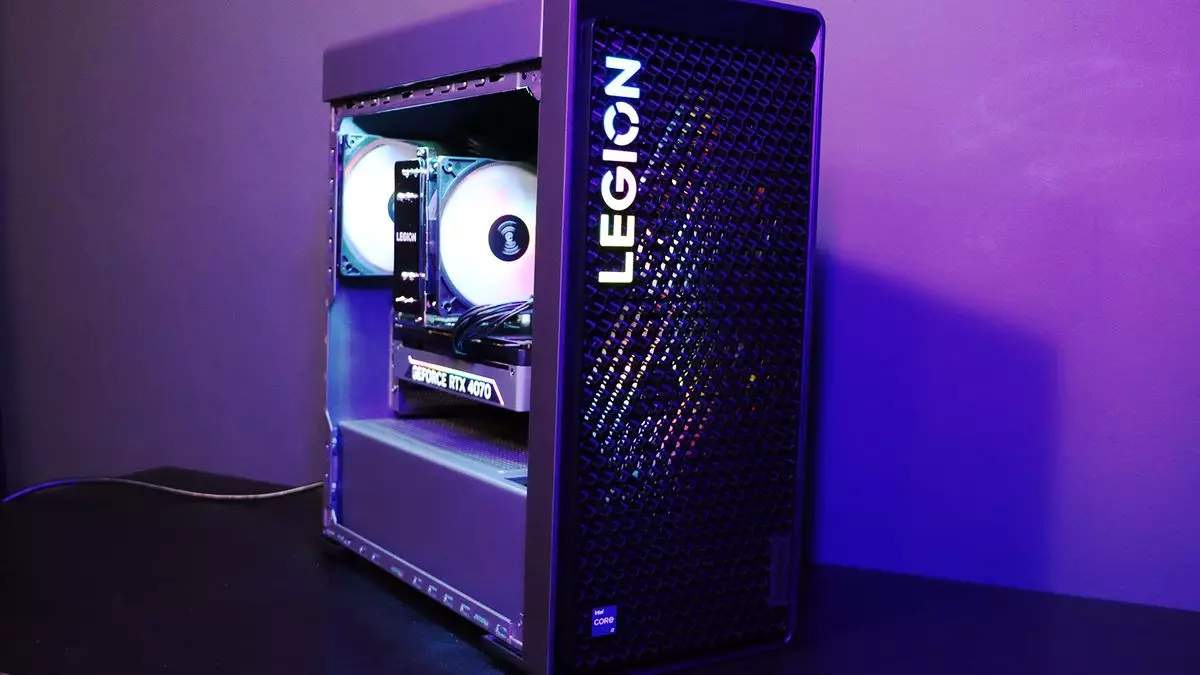The October Prime Day, sometimes referred to as the second installment of the original Prime Day, has garnered attention from tech enthusiasts and bargain hunters alike. With the flood of deals that emerged this year, it’s a fitting moment to analyze not only the pricing trends and notable bargains but the broader implications these events have on both consumers and the tech market.
October Prime Day 2023 has indeed offered a plethora of deals that may have slipped through the cracks of skepticism. From gaming PCs to peripherals, standout prices highlighted an initiative to clear older inventory as the tech world braces for a newer generation of hardware. For instance, a gaming setup containing an RTX 4070 Super for just $1,100 and a Lenovo Legion Go at $550 signal a strategic move from retailers struggling to find their foot amidst an imminent change in the hardware landscape. Such aggressive pricing strategies would naturally pique the interest of both avid gamers and casual consumers on the lookout for a good bargain.
However, while some discounts appeared enticing, a closer examination reveals misleading practices—many discounts stemmed from artificially inflated prices. It’s crucial for consumers to navigate these sales with a discerning eye to ascertain whether a deal genuinely reflects a markdown or is merely the consequence of clever marketing. Despite these potential pitfalls, there is no denying that some discounts represent significant savings.
The secret behind this year’s abundant deals lies in the competitive landscape of technology manufacturing. As the end of a hardware generation looms, many businesses find themselves at a crossroads; they must either offload existing stock or face the risk of being unable to sell it once next-gen components hit the shelves. With the upcoming launches from AMD and Nvidia in the pipeline, companies are increasingly motivated to liquidate their older inventory.
The discussions surrounding next-generation GPUs, including AMD’s anticipated RDNA 4 and Nvidia’s RTX 50-series, have fueled this eagerness. The backdrop of impending releases creates a fertile ground for potential buyers, driving prices down as retailers and manufacturers rush to attract customers eager for significant discounts. For those keeping a keen eye on the tech market, this presents an opportunistic window to seize powerful machines and components at favorable prices.
While the October Prime Day offers remarkable savings, it also presents a proverbial double-edged sword for consumers. The lure of discounts could overshadow the potential pitfalls of purchasing a system that may soon be outpaced by flashier models. In essence, those planning to invest in high-end systems must carefully assess whether they’re set to buy a high-performance machine or if they’re, in essence, purchasing yesterday’s technology at a discounted price.
The question of whether to take the plunge is compounded for those seeking more budget-friendly options. These lower-tier systems might remain competitively viable in the market for additional time, as the newer generations may not affect them directly upon release. Nonetheless, making an informed decision in this evolving environment is paramount for savvy shoppers.
With the anticipation built around next month’s Black Friday, October Prime Day serves as a primer for what consumers might look forward to. It reignites excitement for the upcoming deals and serves as a litmus test for how competitive pricing might shift come late November. Many expect that Black Friday will usher in even more enticing options, particularly as clearance sales reach their zenith.
Consumers are left in a precarious position: on one hand, they can take advantage of the deals now; on the other hand, they may want to wait for potential better bargains just a month away. For instance, with companies poised to release new models, it may be prudent for buyers to consider the risk versus reward of purchasing now versus later.
October Prime Day 2023 stands as a highlight in the consumer electronics market, offering both substantial savings and immense strategic implications for tech manufacturers. As new hardware approaches, consumers have the chance to access valuable opportunities but must remain vigilant in assessing the true value of what they buy. The evolving landscape of technology promises excitement, but it demands careful consideration in the art of purchasing.

